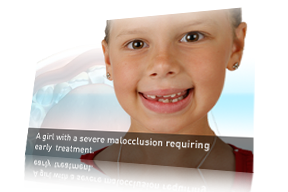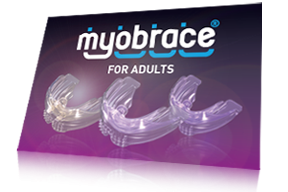For more
Click here »
For more news, tips and events visit the English Myoresearch site.
Myoresearch News
Myofunctional Research Co. - New websites
30 August, 2012
The global demand for orthodontics without braces continues to grow. It's an option that many parents and patients would prefer.
Myobrace.com and Myoresearch.com provide clear information on myofunctional orthodontics and MRC’s appliances for both the public and professionals, increasing awareness of myofunctional orthodontics, and improving your understanding. MRC is dedicated to providing education and support for the professionals who purchase appliances, and their patients who are treated using these appliances.
MRC has redesigned myobrace.com and myoresearch.com - websites that provide information and education for professionals and their patients, and also for members of the general public interested in learning more about treatment options using the Myobrace.
Myobrace.com
Myobrace.com was built specifically to help members of the general public better understand Myobrace treatment.
This website allows users to gain a clearer insight into myofunctional orthodontic treatment options. It is also a comprehensive tool for professionals needing a more efficient way of educating parents and patients on myofunctional orthodontics and Myobrace treatment. Patients are able to learn how the treatment works, and why Myobrace is a viable alternative to traditional orthodontic treatment with braces.
The site allows users to perform a self assessment in order to better understand if treatment is suitable for their needs, and also directs users to their nearest Myobrace Certified Providers, using the website's ‘Find Your Practitioner’ feature.
Save time when patients ask about Myobrace treatment - direct them to myobrace.com.
If you’d like to learn more about the Myobrace Certified Provider program and how you can be listed on myobrace.com’s ‘Find Your Practitioner’ feature , please contact your nearest MRC representative.
Myoresearch.com
Myoresearch.com has been rebuilt from the ground-up and offers features not seen in the industry before. This is part of MRC’s ongoing dedication to providing professionals with effective education and training resources to accompany a comprehensive range of appliances.
The Myofunctional Orthodontics section provides information on a range of topics including the research behind myofunctional orthodontics, and provides advice on how best to implement these treatment methods into any practice. The section also assists professionals to better diagnose and treat patients using myofunctional orthodontic techniques.
The Appliance Selector feature built into the site allows users to enter patient and treatment characteristics and receive insight and assistance on matching an appropriate appliance or sequence of appliances to an individual patient’s needs. This feature has not previously been offered in the dental or orthodontic industries and will prove a valuable reference tool for practitioners.
There is also an extensive library of online training programs and resources that gives practitioners the knowledge to confidently perform myofunctional orthodontics more efficiently, and achieve better treatment outcomes.
The website’s live assistance feature allows users to interact with an MRC’s sales representatives in real-time - providing first-class service to customers.
MRC’s Tip of the Week features fresh content updated weekly in the form of a concise video that will provide clinical insight into the practical applications of myofunctional orthodontics.
The forum on Myoresearch.com allows practitioners from around the world to share cases, build an international network of contacts, and learn from their peers.
The site will be regularly updated with news items, training materials, clinical tips and insight from leading myofunctional practitioners.
This story is tagged:
myobrace,
myofunctional orthodontics,
mrc,
myoresearch.com,
education,
research,
websites,
myobrace.com,
« Return to News
Myobrace Certified Provider Program
30 August, 2012
What is the Myobrace Certified Provider Program?
Do you already have an understanding of myofunctional orthodontics but you're wondering what your next step is? The Myobrace Certified Provider™ program has been developed for orthodontists and dentists who are looking for a streamlined process for introducing myofunctional orthodontics into their practice.
The program's network is comprised of orthodontists and dentists from around the world who are united in the common desire to provide comprehensive, high-quality myofunctional orthodontic care to their patients. Myobrace Certified Providers are given access to MRC's own clinically-developed educational and marketing tools.
Why become a Myobrace Certified Provider?
Here are just some of the potential benefits of becoming a Myobrace Certified Provider™:
• Treat a wider range of patients.
• Increase patient flow in your practice.
• Free up doctor time by delegating more tasks to trained auxiliaries.
• Less chair-side time is required per-patient.
• Financial benefits can be achieved for both doctor and the patient.
The demand for orthodontic treatment continues to grow. MRC is the leader in providing effective myofunctional orthodontic treatment - without the need for braces or extractions. Myobrace® was developed to meet this demand.
Myobrace® is becoming well known as the primary no braces approach to myofunctional orthodontic treatment. The Myobrace Certified Provider™ program allows orthodontists and dentists to be part of a global network to satisfy the high public demand for this treatment.
Certified providers will gain access to extensive educational materials, case support and training, along with the latest marketing materials. Another advantage of certification is that certified practitioners can also be listed on the Find your practitioner feature on myobrace.com. This website for the general public provides extensive information and research on myofunctional orthodontics and Myobrace® treatment.
Who can be a Myobrace Certified Provider?
Any approved licensed orthodontist or dentist can potentially become a Myobrace Certified Provider™. There are various levels of certification available which differ in the level of support, education and marketing access. The certification status a doctor can obtain is dependent on their previous myofunctional orthodontic experience and level of MRC courses attended. The program levels can be summarised as follows:

Bronze
A provider at Bronze-level has taken part in the relevant training required to provide Myobrace® treatment to patients.
|

Silver
Providers at a Silver level have undergone all the relevant training required to offer Myobrace® treatment to patients and have good experience treating patients using Myobrace®. A practice at this level also incorporates an area devoted to delivering specialised educational elements to further motivate and encourage patients.
|

Gold
Providers at a Gold level have undergone extensive, regular Myobrace® training and have excellent experience treating patients using Myobrace®. The Gold Provider has an area of the practice completely devoted to myofunctional orthodontics using MRC’s practice layout systems. The design of, and educational materials used in a practice at this level are entirely geared towards treating patients using myofunctional orthodontics.
|

Platinum
Providers at a Platinum level have undergone extensive, regular Myobrace® training and have excellent experience treating patients using Myobrace®. Platinum practices are entirely devoted to delivering myofunctional orthodontic services to all patients. The clinic design requirements are on a larger scale specified by MRC’s advanced design team and incorporate extensive educational materials and design characteristics unique to platinum-level practices only.
|
How do you become a Myobrace Certified Provider™?
Step 1: The first step to becoming a Myobrace Certified Provider™ is by simply requesting an information pack from an MRC representative. The information pack will outline the eligibility, levels, inclusions and terms of the certification.
Step 2: There are multiple levels of certification to suit a range of budgets and practices dependent on additional available space. Choose one which is most suitable for you. Inside the information pack is also an application form for you to fill out and return to your MRC representative.
Step 3: Once MRC receives and processes your application form, you will be contacted in regards to the next steps you need to take to become a Myobrace Certified Provider™.
Myobrace Certified Providers and their staff are required to undertake specific training at an MRC centre, or through one of MRC’s online training seminars. MRC provides regular training on myofunctional orthodontics and how to use MRC's appliances in your practice.
For more information on Myobrace® certification please contact your nearest MRC representative.
This story is tagged:
myobrace,
myofunctional orthodontics,
mrc,
orthodontics,
orthodontic treatment,
Myobrace Certified Provider,
« Return to News
Myobrace® - Advanced Orthodontic Appliance System.
30 August, 2012
The demand for orthodontic treatment continues to grow. MRC is the leader in providing effective myofunctional orthodontic treatment - without the need for braces or extractions.
The Myobrace® appliance range is an advanced myofunctional orthodontic system, intelligently structured for a clearer approach to appliance selection. The appliances incorporate cutting-edge design characteristics that are unrivaled by competitors; taking orthodontic treatment to a whole new level.
For the clearest approach to appliance selection The Myobrace System™ uses familiar classifications to separate each appliance group. These groups are: Myobrace for Juniors™, Myobrace for Kids™, Myobrace for Teens™ and Myobrace for Adults™ - representing the primary, early-mixed, late-mixed and permanent dentition stages.
To further simplify appliance selection each appliance group generally consists of three appliances covering three stages of treatment. Each stage clearly outlines the appliance’s purpose during a specific stage of treatment. The treatment stages are as follows:
• Stage 1 - habit correction;
• Stage 2 - arch development; and
• Stage 3 - final alignment and retention.
The Myobrace for Teens™ is the only exception to this format. It has a separate dental alignment stage - making it a four stage appliance group.
With an understanding of the appliance groups and stages, the appliance names will make perfect sense. Each individual appliance name directly corresponds to both the appliance group and the stage within the group. For example; the Myobrace for Kids™ appliances are named K1, K2 and K3. Another example is the Myobrace for Teens™ which uses a four-stage appliance sequence, and are named T1, T2, T3 and T4. This naming style applies for the majority of appliances within the Myobrace® range. This sequential labeling system aims to better assist doctors in choosing the right appliance for the patient at every stage of treatment and allows the patient to clearly understand their treatment progress.
There are many new and some existing appliances that make up The Myobrace System™. There are four main appliance groups that directly relate to the dentition; and two appliance groups which provide more specialised treatment:

Myobrace for Juniors™ - Primary Dentition
Myobrace for Juniors™ is a three stage appliance system for the primary dentition - J1, J2 and J3 - incorporating fundamental design characteristics based on its predecessor, the Infant Trainer. Advancements to the design features have been developed specifically for habit correction in young children.
|

Myobrace for Kids™ - Mixed Dentition
Myobrace for Kids™ for the mixed dentition is made up of the K1, K2 and K3. The K1 and K2 appliances were formerly named the i-2n and the i-2 - MRC’s most advanced myofunctional appliances. The K3 is a newly-developed appliance used for final alignment and retention. This incorporates MRC’s new tongue tag development which allows for better tongue position in the final alignment stage of treatment.
|

Myobrace for Teens™ - Developing-Permanent Dentition
Myobrace for Teens™ consists of a four-stage appliance sequence with features that actively develop the arch-form and align the teeth as the permanent dentition is developing. The T1 and T2 are used to correct the poor myofunctional habits and develop the arch-form, while the T3, formally the Myobrace Regular, features tooth slots and actively works to align the teeth. Final retention is achieved with the T4 - a new appliance featuring MRC’s new tongue tag development for better tongue position in the final alignment stage of treatment.
|

Myobrace for Adults™ - Permanent Dentition
Myobrace for Adults™ is designed specifically for the permanent dentition. The A1, A2, and A3 make up the three-stage appliance group that incorporates many of MRC’s proven design principals, including features that correct poor oral habits, along with other newly adapted design characteristics to treat malocclusion in adults.
|

Myobrace Interceptive Class III - Mixed Dentition
Myobrace Interceptive Class 3™ is a specialty appliance range which features design characteristics unique to the correction of class 3 malocclusion in the mixed dentition. The i-3N and i-3, formally part of the Interceptive Series, remain unchanged. The newly-developed i-3H is used in the final stages of treatment for alignment and retention and features MRC’s new tongue tag development for better tongue position in the final alignment stage of treatment.
|

Myobrace for Arch Development
Myobrace for Arch Development™ is a range of appliances designed to provide treatment solutions for cases that require increased arch development in combination with MRC’s appliances. The Bent Wire System or BWS™ is now categorised into this system, joined by the Biobloc and MRC’s new composite buildup technique - Myolay - which assists in realigning the jaws and the occlusion.
|
This story is tagged:
myobrace,
malocclusion,
myofunctional orthodontics,
mrc,
orthodontics,
arch development,
orthodontic treatment,
myobrace system,
the myobrace system,
« Return to News
Myobrace - taking myofunctional orthodontics into the future.
30 August, 2012
The demand for orthodontic treatment continues to grow. MRC is the leader in providing effective myofunctional orthodontic treatment - without the need for braces or extractions.
MRC has been developing innovative intra-oral appliances to treat the causes of malocclusion and TMJ disorder since 1989, and have developed these treatment concepts into a range of appliance systems suitable for children of all ages. MRC takes a different approach to orthodontic treatment. Changing the oral environment by removing the poor oral habits that are the major cause of malocclusion naturally aligns the teeth and results in better jaw and facial development. MRC’s well-established Trainer System is now the dominant early-myofunctional treatment system preferred by dentists and orthodontists around the world. MRC has constantly developed the most advanced dental appliances and now these latest appliances will exclusively be under the Myobrace name.
Now, Myobrace® is the unified brand taking MRC and myofunctional orthodontics into the future.
The highly-successful Trainer and TMJ Appliance systems, which have become well-established with professionals over the last two decades, will remain unchanged.The Myobrace System™ will incorporate the advanced range of dual-moulded appliances, with additional features that provide improved myofunctional habit correction and dental alignment. This means a wider range of growing children and a wider range of malocclusions can now be treated with the Myobrace System™.
It’s all very well to have advanced appliance systems, but these systems must be simple to use, easy to deliver and cost-effective for both doctor and patient. Myobrace® uses a three-stage appliance system that takes into consideration a patient’s age, dentition and type of malocclusion - allowing for a clear and more precise approach to diagnosis and appliance selection. Advancements have been made to the educational materials that support treatment - including new websites that offer special features not seen in the industry before.
Another significant advancement has been the development of the Myobrace Certified Provider™ program. This program caters to doctors wanting a more efficient approach to making myofunctional orthodontics really work in their practice. This global initiative gives dentists and orthodontists access to additional training, priority support, patient educational programs and improved practice layout systems that can result in increased financial benefits for both the doctor and patient. Myobrace® offers dental professionals a highly-effective yet simple solution to the worldwide problem of malocclusion.
The Myobrace System™ will allow myofunctional orthodontics to become the standard orthodontic treatment - treating earlier and treating myofunctional habits first will allow orthodontic treatment to become simpler and more effective. MRC has been able to achieve practical and cost-effective means of delivering advanced myofunctional correction for every child.
The Trainer and Myobrace Systems™ will take pediatric orthodontic care into the future and will be the first preference for parents concerned about the growth and development of their children.
For more information please contact your nearest MRC representative or visit our websites
This story is tagged:
myobrace,
malocclusion,
myofunctional orthodontics,
orthodontics,
myobrace system,
the myobrace system,
« Return to News
By Dr Rohan Wijey, BOralH, Grad Dip Dent.
The less we know about a topic, the more clamorous are the polemics and the sharper the schism is between them. The orthodontic tradition is no different and has seen a familiar quarrel rumbling for more than a century.
In broad terms, two faculties of thought have evolved. The first, traditional school (Angle 1907) works under the premise that certain skeletal dimensions are intransigent (Cross 1977), and uses fixed appliances to render predominately dentoalveolar movements.
The second, historically European school (Andreson & Haupl 1936), is predicated on the belief that muscle function affects the size of jaws and dental arches, and that functional appliances can fix form by treating dysfunction.
This article will not subscribe to the heavily flogged corpse that is the debate between the two sides.
It is simply unscientific to enlist ourselves to either cause; rather, we must be directed by the flow of evidence, and be willing to jettison past beliefs in favour of new evidence.
Traditionalism exhumed, progress buried?
“Providing early orthodontic treatment for children with upper front teeth is no more effective than providing one course of orthodontic treatment when the child is in early adolescence” (Cochrane Review 2007).
Turpin (2007) claims this news “will help the clinician feel less pressure to begin early correction of this malocclusion.”
It must be noted, however, that the Review’s conclusion was based simply on overjet, peer assessment rating (PAR) scores and ANB angle; the first and second criteria concern dentoalveolar relationships, while the third describes how the maxilla and mandible approximate to each other, and not to the rest of the cranium.
There is no assessment of soft tissue profile, and these scores are simply not indicative of how the face looks.
Moreover, there is no mention of such complications as root resorption (Ballard et al. 2009), incisor trauma (Justus 2008), white spot lesions (Willmot 2008) and damaging of facial profiles with premolar extractions that are all associated with later intervention.
“Whenever there is a struggle between muscle and bone, bone yields” (Graber 1963)
The role of muscles in fashioning bone and dental arches is an immutable fact. Many studies have shown that masticatory muscle function increases sutural growth in the craniofacial complex and stimulates bone apposition (Kiliaridis 2006). Furthermore, it is not simply mastication but the whole spectrum of muscle function that influences bone, such as deglutition, respiration, sucking and speech.
Electromyographical studies have also revealed that muscles have the power to remodel bone and arches even at postural resting position, as compensatory myofunctional alterations for structural discrepancies (de Souza et al. 2008).
The studies have cast a retrospective glow on Graber’s prescient 1963 sentiment that any hope of a stable result rests on restoring the myofunctional balance of the stomatognathic system.
This overwhelming evidence clearly indicates the need for treatment to be geared toward correcting function, because it is function that affects form.
Evidence-based orthodontics
Since the epidemiologist Sackett (1986) observed that orthodontics was on par with scientology in terms of scientific legitimacy, the industry has made a concerted effort to transform itself. More orthodontists are embracing this paradigm-shift toward the weight of evidence, which rests firmly with early treatment and treating muscle function.
A case in point is this 9 year old girl with a narrow, retrusive maxilla and mandible, crowding of the upper arch and anterior flattening of the lower arch. An expansion appliance was used for the maxilla to create enough room for the tongue to posture correctly in the palate, together with a myofunctional appliance. By simply treating function, after only 4 months the overbite has reduced significantly, the lost lower right c-space has begun to re-open and the dental alignment has also improved. Obviously, the myofunctional phase of treatment is yet incomplete and the dental phase has not even begun, however, the improvement in the facial profile is already remarkable.
 There is always going to be an important place for fixed appliances, because it is still the most efficient way to move a tooth. However, the two worlds are far from mutually exclusive: We can shorten the time needed for braces and greatly improve the stability of the result and fullness of the face if we intervene early with myofunctional therapy.
There is always going to be an important place for fixed appliances, because it is still the most efficient way to move a tooth. However, the two worlds are far from mutually exclusive: We can shorten the time needed for braces and greatly improve the stability of the result and fullness of the face if we intervene early with myofunctional therapy.
A new dawn is breaking in the industry, one in which we can now use the best of both worlds for better faces as well as teeth.
This story is tagged:
malocclusion,
orthodontics,
tongue,
alignment,
early treatment,
muscle,
« Return to News

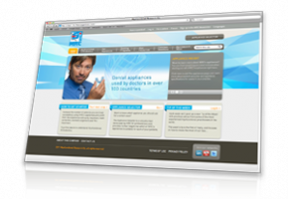
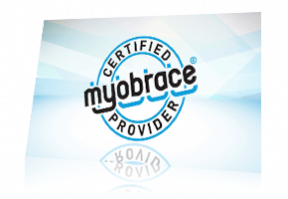




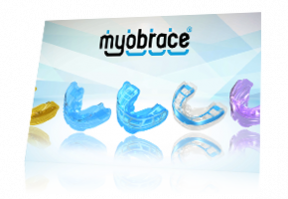






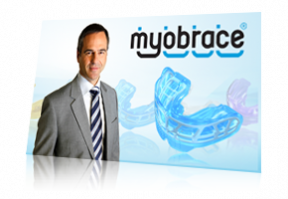
 There is always going to be an important place for fixed appliances, because it is still the most efficient way to move a tooth. However, the two worlds are far from mutually exclusive: We can shorten the time needed for braces and greatly improve the stability of the result and fullness of the face if we intervene early with myofunctional therapy.
There is always going to be an important place for fixed appliances, because it is still the most efficient way to move a tooth. However, the two worlds are far from mutually exclusive: We can shorten the time needed for braces and greatly improve the stability of the result and fullness of the face if we intervene early with myofunctional therapy.